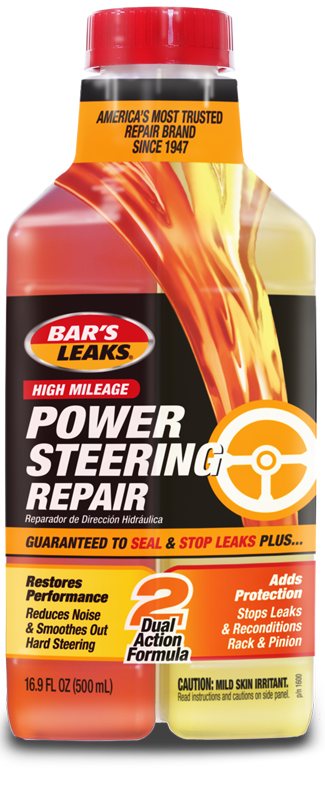If you are a car owner, you probably know that you need to change your oil about every 5,000 miles or so. You may be less sure when to change power steering fluid. In fact, you may not think about how often you should change your power steering fluid at all. It’s unlikely you have even considered changing your power steering fluid unless you are having a problem with your steering or your mechanic recommends it. Even then, you may not be sure if it is something you really need to do.
Why Do I Need A Power Steering Flush?
Why do you need a power steering fluid flush? One of the most important reasons is power steering fluid contamination. Power steering fluid doesn’t burn off like oil does, but it can get dirty. Particles and sludge can build up in the fluid. and it won’t go away — it will only grow. Once you have contaminated fluid, it is running through your system every time you turn the wheel putting more stress on your power steering fluid pump and the rest of the system. If you wait until you are hearing groaning noises and struggling to turn the wheel, you may already be in for a costly repair.
How Often Should Power Steering Fluid Be Changed?
So how do you know when to change power steering fluid? You don’t need to do it every time you change the oil, and if your mechanic tries to sell you on a power steering fluid flush every time you bring your car in, he is probably taking advantage of you. So, what is the answer? Even what the experts say may vary. Some say every 80,000 to 100,000 miles, others say every other year, others recommend as frequently as every 30,000 miles. The answer can even be different for different vehicles. What is the correct answer for you?
Here are some ways to know that you may need to go ahead and change that power steering fluid.
1. Check the Owner’s Manual
Your owner’s manual is chock full of information about how to take care of your car, including when to change important fluids. While it’s not guaranteed that your owner’s manual will have a recommendation about power steering fluid, there is a good chance you will find one in there, and if you do, you can rely on it. It’s a good idea to check just in case, as the manual might even have recommendations about which formulation to use for optimal performance.
2. Inspect the Fluid
Run the car for a bit, then get under the hood, pull out the dipstick and check the color of your fluid. Power steering fluid should usually be fairly bright red. If yours is dark, that’s usually a signal that you may have a problem. Darker fluids, especially when accompanied by a burnt smell, usually means that the fluid has been damaged by overheating and is no longer effective. You will also want to take a look into the reservoir itself. If you see particles in your fluid, this is another sign that sludge and contaminants are in your system, and you need to flush it out and add fresh power steering fluid.
3. Listen to Your Pump
 Believe it or not, your power steering fluid pump may actually tell you if you need to change your fluid. The more your fluid becomes contaminated, the harder it is for that pump to do its job, and the noisier it gets while trying to do it. If you hear loud noises coming from the area of your power steering system, you may want to help that pump out by giving it fresh power steering fluid to work with.
Believe it or not, your power steering fluid pump may actually tell you if you need to change your fluid. The more your fluid becomes contaminated, the harder it is for that pump to do its job, and the noisier it gets while trying to do it. If you hear loud noises coming from the area of your power steering system, you may want to help that pump out by giving it fresh power steering fluid to work with.
4. Steering Difficulties
Although you want to change your power steering fluid long before this happens, if you are struggling to turn the steering wheel, this is a sure sign you have an issue with your power steering fluid. It may be that the level of power steering fluid is too low or that the fluid is spent, too thin or too contaminated. Whatever the reason is, this is not a problem to ignore. Trying to steer without adequate power steering can be dangerous as you may not get the responsiveness you need to avoid an accident. Ignoring the problem can also result in further damage to your system.
How Else Can You Take Care of Your Power Steering System?
 In addition to making sure to fill your power steering reservoir with fresh, high-quality power steering fluid, you may also want to consider putting in a bestselling chemical additive like our Bar’s Leaks Power Steering Repair. This product cleans and lubricates your power steering fluid, allowing it to be more effective and last longer. It can smooth out hard steering and quiet the noise your pump makes. It also contains properties to stop leaks and recondition your rack and pinion system. It’s a great addition to just about any power steering system, especially if your car is older.
In addition to making sure to fill your power steering reservoir with fresh, high-quality power steering fluid, you may also want to consider putting in a bestselling chemical additive like our Bar’s Leaks Power Steering Repair. This product cleans and lubricates your power steering fluid, allowing it to be more effective and last longer. It can smooth out hard steering and quiet the noise your pump makes. It also contains properties to stop leaks and recondition your rack and pinion system. It’s a great addition to just about any power steering system, especially if your car is older.
If you have very low power steering fluid when you go to change it, it is highly likely you have a leak or a worn-out seal or O-ring. Since power steering fluid does not burn off with normal use, there is no reason you should have much less than a full reservoir. If you suspect you have a leak problem, adding a product like the one above or like Bar’s Leaks Power Steering Stop Leak Concentrate, which is specially designed to restore O-rings and seals and stop and seal power steering fluid leaks, can help.
When using a chemical additive, you want to be sure to use a quality, proven product. There are a great many brands of car fluid additives out there, and not all of them are equally effective. To find original Bar’s Leaks chemical additives for your vehicle, use this convenient locator. For more useful information on finding the right products to extend the life and performance of your car’s internal systems, contact Bar’s Leaks online today.

